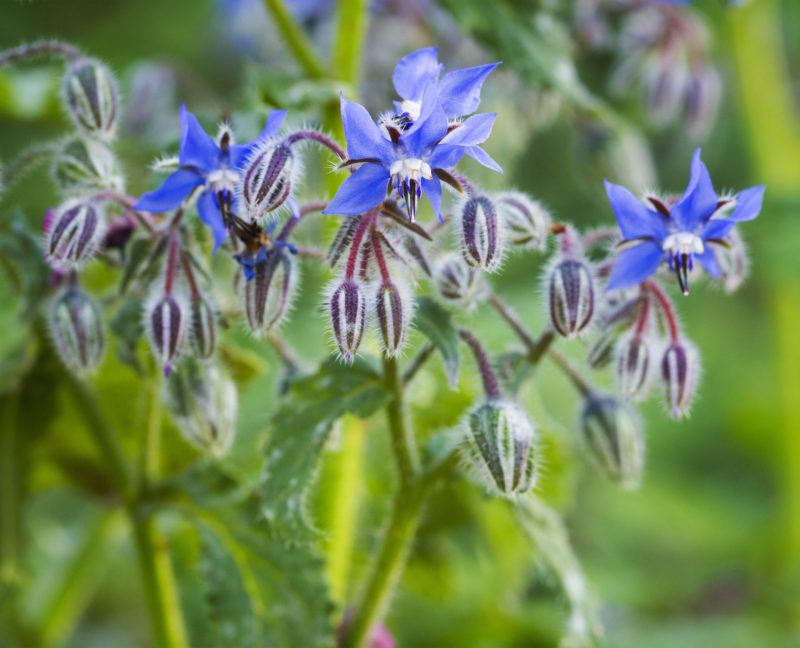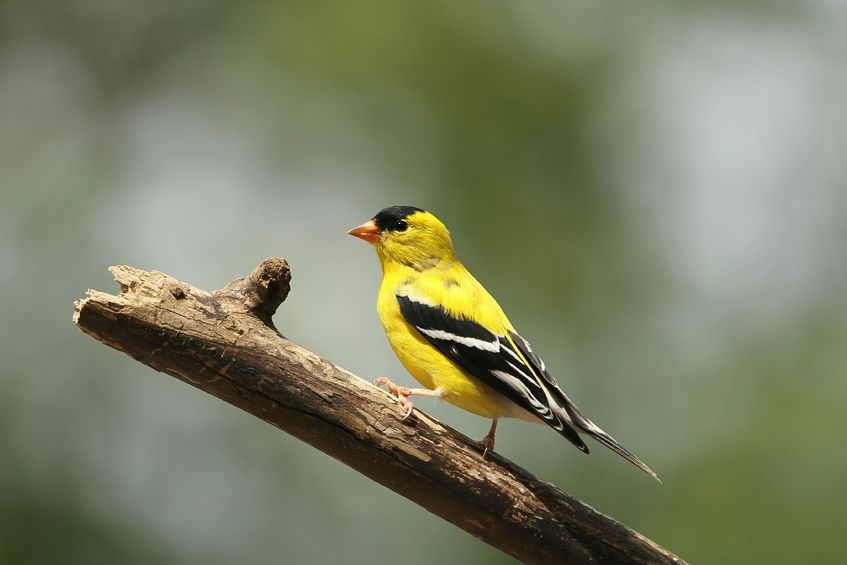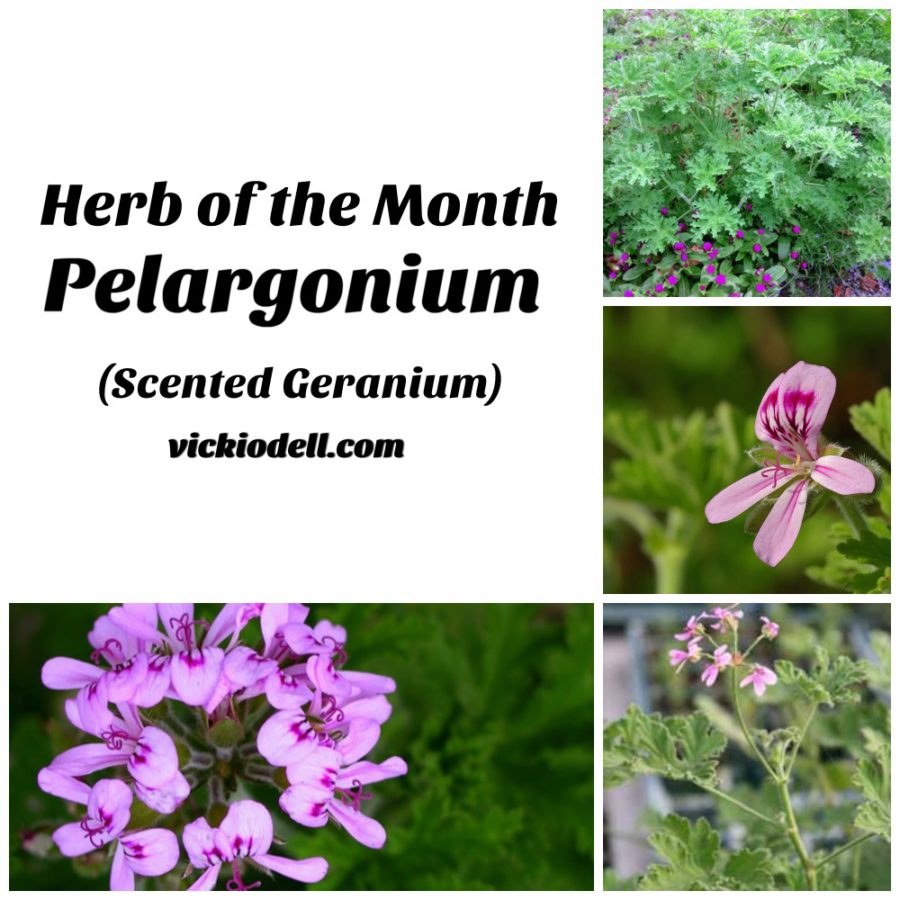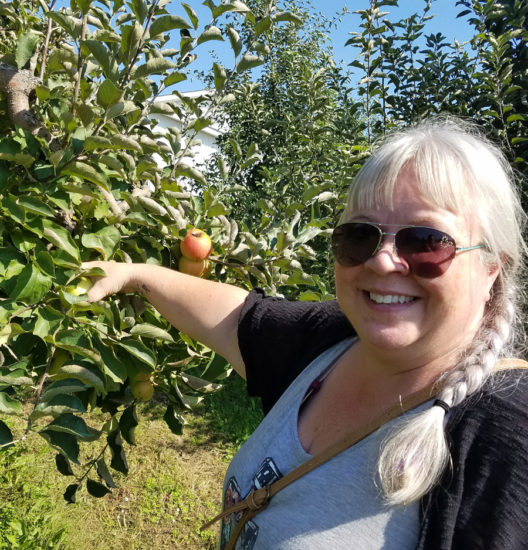
Beautiful. Traditional. Functional. Therapeutic. Borage.
It’s not only a favorite plant of the honey bees, but also bumble bees and small, native bees. It has served many purposes from the time of ancient Rome to the present. Pliny the Elder believed it to be an anti-depressant, and it has long been thought to give courage and comfort to the heart. One old wives’ tale states that if a woman slipped a bit of borage into a promising man’s drink, it would give him the courage to propose. At one time it was grown by beekeepers to boost honey production. It is often grown as an ornamental plant, but is also edible and medicinal.
Botanical names
Borage Borago officinalis is from the Boraginaceae family along with comfrey, lungwort and forget me not to name a few. It is sometimes known as starflower.
Where it grows
Originating in Syria, but naturalized throughout the Mediterranean region, as well as Asia Minor, Europe, North Africa, and South America.
It is suggested the name borage is derived from the Celtic word borrach meaning ‘a man of courage’, the Celts drank their wine with borage before entering battle. Some people say that the name might be derived from the Latin borra, it’s meaning rough hair, describing the hairy covering on the stems and leaves.
Propagate by seed all year in the sub-tropics, or after frost in colder areas. In milder climates, borage will bloom continuously for most of the year. They self seed ensuring a plentiful supply.
It will grow in most soil types but it prefers light, free-draining soil. In the garden, borage is a useful companion plant to strawberries they are believed to stimulate each other’s growth. Their broad leaves protect the soil and the roots draw up nutrients.
Part used
Aerial parts, flowers, seed oil
Collection
Harvest leaves and flowers as needed. The best time to harvest the leaves is when the plant is young, before the buds have started to flower. Older leaves will get prickly, making harvesting a bit unpleasant.
Borage is open pollinated, and it is very easy to collect the seed from flowers if they are allowed to remain on the plant and turn brown. Borage self seeds if allowed to go to seed naturally.
Main Actions
Emollient, demulcent, anti-inflammatory, astringent, diuretic (leaves), diaphoretic.
Borage is rich in minerals, especially potassium, calcium and mineral salts. It also contains a beneficial saline mucilage, this forms a soothing film over a mucus membrane, relieving minor pain and inflammation. A tea made from the leaves is said to reduce fevers and ease chest colds. It makes an excellent facial steam for improving very dry, sensitive skin.
Uses
Borage has a light cucumber fragrance, the young leaves can be torn into salads, mashed into cream cheese, made into sauces or puréed soups. It is popular as a culinary herb in Germany.
Add flowers to herbal vinegar as a dye and for a slight cucumber flavour The flowers and young leaves can be used to garnish salads, dips, and cucumber soups.
In recent times Borage has been cultivated commercially for the seed oil, which is the highest known plant-based source of gamma-linolenic acid (GLA). Borage oil is often marketed as starflower oil. Whilst Evening primrose oil has been the main source for GLA, Borage seed oil contains higher amounts and is beginning to replace evening primrose oil.
Borage seed oil is used for regulation of metabolism and balancing hormones, being a remedy for PMS and hot flushes of menopause. Externally, a poultice of the leaves can be used on swellings and inflammation. Tea made from the dried flowers is a traditional calming drink in Iran. It has a rich purple color that turns bright pink by adding a few drops of lemon juice.
Safety
The leaves and flowers contain a small amount of PAs, the same problematic compounds that have limited the use of comfrey. The presence of these alkaloids is much lower than in comfrey, and would require ingestion of large amounts for a sustained period to become harmful – use caution and common sense. Not recommended for long term use, or while pregnant.
*We recommend that you consult with a qualified healthcare practitioner before using herbal products, particularly if you are pregnant, nursing, or on any medications.
*This statement has not been evaluated by the Food and Drug Administration. This product is not intended to diagnose, treat, cure, or prevent any disease. For educational purposes only.



